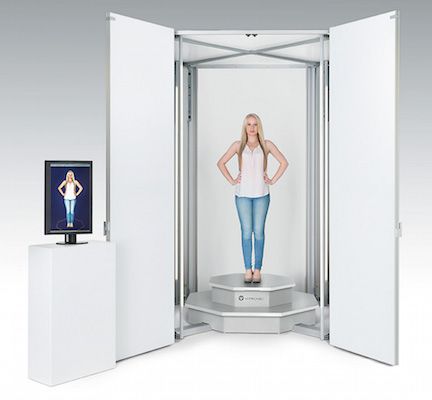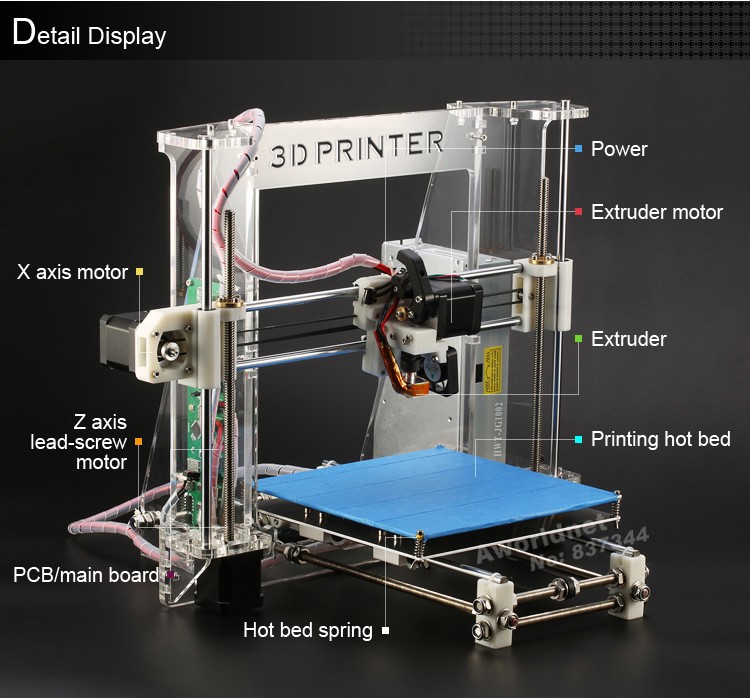Worlds biggest 3d printer
Largest 3D printers in 2022 for XXL prints
Large-scale 3D printers are able to print massive objects thanks to their gigantic build volumes. This guide covers some of the largest 3D printers in the world that are commercially available.
Last update June 23, 2022
We removed discontinued products and updated the BLB Industries The BOX lineup, which has been replaced by The Industry MAGNUM. We also added MASSIVit's latest solution, the Massivit 10000.
Table of contents
Handpicked related content
Large scale 3D printers (XXL): 2022 selection
BIG-Meter
F1000
BigRep ONE v4
400 Series WORKBENCH XTREME
T3500
MAGNUM
Massivit 10000
MAMA
3D printing furniture
3D printing large prototypes
3D printing production series
Customized large scale 3D printers
What are the best large scale 3D printers?
Large-scale 3D printers have been in the spotlight for quite some time. When we say large scale, we mean it– these machines can 3D print objects of over 1 square meter. They can be used to 3D print pieces of furniture, large prototypes, or several series of smaller objects in one go.
The professional 3D printers featured in our article are basically super-sized versions of ordinary desktop 3D printers. They almost all use extrusion 3D printing technology (FFF) and work the same way as regular desktop printers.
Our “largest 3D printers” selection does not include construction 3D printers, which fit into a different category.
Handpicked related content
If these large scale 3D printers (XXL) are too big, check out our other selections:
- Large format 3D printers (XL)
- Large volume 3D printers (L) for desktops/benchtops
- Large resin 3D printers (L)
Large scale 3D printers (XXL): 2022 selection
| Brand | Product | Build size | Country | Price Approximate starting prices based on supplier-provided information and public data. | |
|---|---|---|---|---|---|
| Modix This brand is a certified partner from our network. | BIG-Meter | 1010 × 1010 × 1010 mm39.76 × 39.76 × 39.76 in | Israel | $ 11,50011 629 €10,198 £1,663,866 ¥ | Buy |
| CreatBot | F1000 | 1000 × 1000 × 1000 mm39.37 × 39.37 × 39.37 in | China | $ 29,99930 336 €26,602 £4,340,375 ¥ | Buy |
| BigRep | BigRep ONE v4 | 1005 × 1005 × 1005 mm39.57 × 39.57 × 39.57 in | Germany | $ 30,00030 000 €26,603 £4,340,520 ¥ | Quote |
| 3D Platform | 400 Series WORKBENCH XTREME | 1000 × 1500 × 700 mm39.37 × 59.06 × 27.56 in | United States | $ 49,99950 560 €44,337 £7,234,055 ¥ | Quote |
| Tractus3D | T3500 | ⌀ 1000 x 2100 mm | Netherlands | $ 59,00049 900 €52,318 £8,536,356 ¥ | Quote |
| The Industry | MAGNUM | 1500 × 1200 × 1200 mm59. 06 × 47.24 × 47.24 in 06 × 47.24 × 47.24 in | Sweden | $ 135,000129 990 €119,712 £19,532,340 ¥ | Quote |
| MASSIVit 3D | Massivit 10000 | 1420 × 1110 × 1500 mm55.91 × 43.7 × 59.06 in | Israel | upon request | Quote |
| Modix This brand is a certified partner from our network. | MAMA | 2000 × 5000 × 1000 mm78.74 × 196.85 × 39.37 in | Israel | upon request | Quote |
Expand to see more specs
The products in the table are ranked by price (low to high).
| Brand | Product | Build size | Build volume | Country | Price Approximate starting prices based on supplier-provided information and public data. Prices may vary by region, over time and do not include additional products or services (taxes, shipping, accessories, training, installation, …). | |
|---|---|---|---|---|---|---|
| Modix This brand is a certified partner from our network. | BIG-Meter | 1010 × 1010 × 1010 mm39.76 × 39.76 × 39.76 in | 1030.3 L | Israel | $ 11,50011 629 €10,198 £1,663,866 ¥ | Buy on Modix |
| CreatBot | F1000 | 1000 × 1000 × 1000 mm39.37 × 39.37 × 39.37 in | 1000 L | China | $ 29,99930 336 €26,602 £4,340,375 ¥ | Buy on CreatBot |
| BigRep | BigRep ONE v4 | 1005 × 1005 × 1005 mm39.57 × 39.57 × 39.57 in | 1015.08 L | Germany | $ 30,00030 000 €26,603 £4,340,520 ¥ | Get a quote |
| 3D Platform | 400 Series WORKBENCH XTREME | 1000 × 1500 × 700 mm39.37 × 59.06 × 27.56 in | 1050 L | United States | $ 49,99950 560 €44,337 £7,234,055 ¥ | Get a quote |
| Tractus3D | T3500 | ⌀ 1000 x 2100 mm | 1649.34 L | Netherlands | $ 59,00049 900 €52,318 £8,536,356 ¥ | Get a quote |
| The Industry | MAGNUM | 1500 × 1200 × 1200 mm59.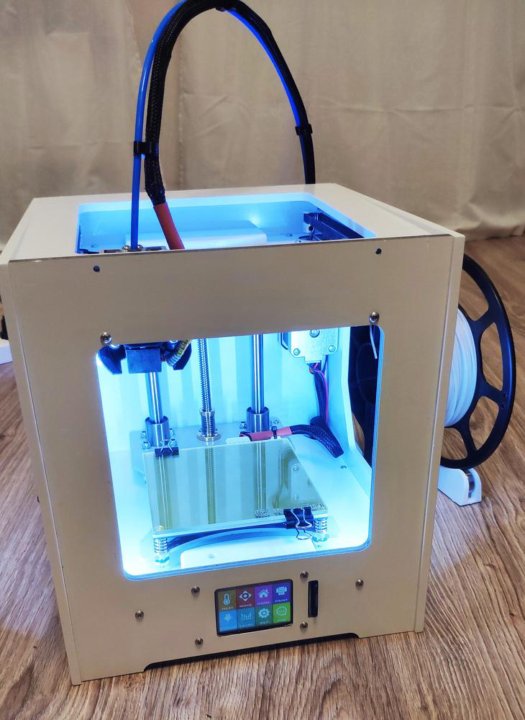 06 × 47.24 × 47.24 in 06 × 47.24 × 47.24 in | 2160 L | Sweden | $ 135,000129 990 €119,712 £19,532,340 ¥ | Get a quote |
| MASSIVit 3D | Massivit 10000 | 1420 × 1110 × 1500 mm55.91 × 43.7 × 59.06 in | 2364.3 L | Israel | upon request | Get a quote |
| Modix This brand is a certified partner from our network. | MAMA | 2000 × 5000 × 1000 mm78.74 × 196.85 × 39.37 in | – | Israel | upon request | Get a quote |
Overview of the best large scale professional 3D printers
The Modix BIG-Meter offers over one cubic meter of build volume. As all Modix printers do, the BIG-Meter is delivered as a self-assembly kit, which contributes to the printer’s relatively low price point.
This large scale 3D printer comes with a dual extruder (E3D Aero and E3D Volcano print heads), full automatic bed leveling (bed tile and bed mapping), a Wi-Fi controller, and a range of industrial-grade components. The print bed heats up to 120°C.
The print bed heats up to 120°C.
Buy on Modix Get a quote Add to comparison
The F1000 from CreatBot offers a full cubic meter of fully enclosed and heated (60°C) build volume. There’s also a filament chamber that can hold two spools of up to 5kg each and heat up to 45°C or 65°C.
Its dual nozzles are able to heat up to 420°C, while the print bed heats up to 100°C. Compatible materials range from standard PLA and ABS to PETG and carbon fiber-filled and flexible materials.
Buy on CreatBot Get a quote Add to comparison
The BigRep ONE, currently in its third generation of upgrades and updates, is one of the only large-sized 3D printers to provide independent dual extrusion (IDEX). IDEX can cut production times in half thanks to duplication or mirror modes.
The printer’s large touchscreen grants access to the webcam and allows users to resume prints even after a power outage. The filament holder is able to hold multiple spools of up to 8kg.
Contact manufacturer Get a quote Add to comparison
This large format 3D printer with dual extrusion is customizable.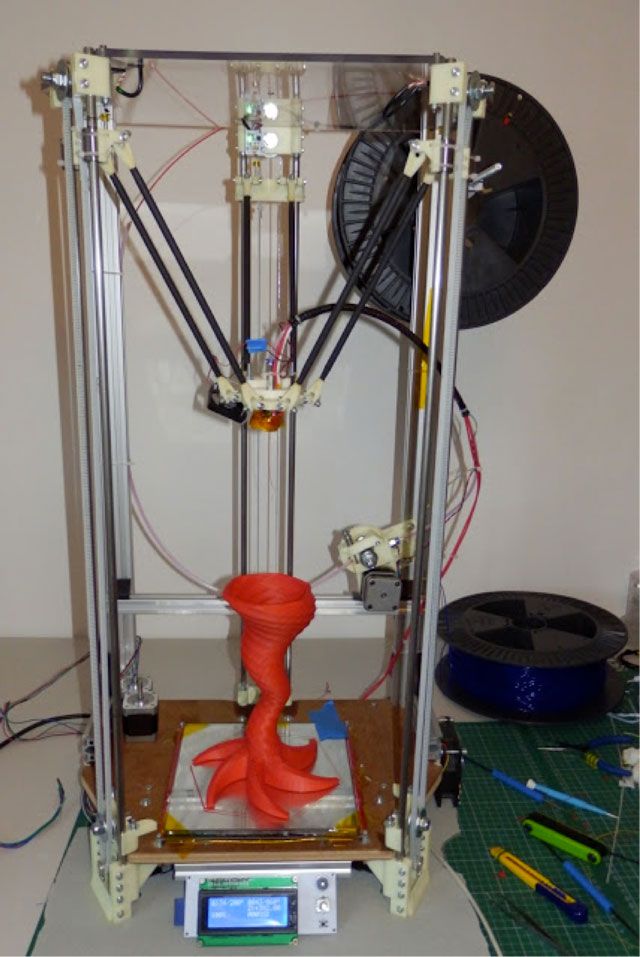 Various extruders are available, and it’s possible to add an enclosure. The enclosure can be heated and/or include an air filter as well.
Various extruders are available, and it’s possible to add an enclosure. The enclosure can be heated and/or include an air filter as well.
It’s possible to choose from two different control systems; with Wi-Fi or with Ethernet connectivity. The automatic leveling probe touches over 400 points on the print bed to ensure optimal calibration.
Contact manufacturer Get a quote Add to comparison
The T3500, a huge delta 3D printer, offers a massive build size that can 3D print to an exact scale of 1:1 up to 2.1 meters high.
The large-scale Tractus3D T3500 can 3D print exotic materials with its hot-end extruder capable of reaching up to 300°C. This 3D printer features a heated bed and can be equipped with an optional dual extruder.
Contact manufacturer Get a quote Add to comparison
The Industry MAGNUM is a very large format 3D printer by The Industry (previously called BLB Industries), a manufacturer based in Sweden. This XXL 3D printer offers a build volume of 2. 16m³ and comes with a set of nozzles ranging from 2 to 8mm in diameter. The MAGNUM is based on the company’s previous model, the BLB Industries THE BOX.
16m³ and comes with a set of nozzles ranging from 2 to 8mm in diameter. The MAGNUM is based on the company’s previous model, the BLB Industries THE BOX.
Contact manufacturer Get a quote Add to comparison
The Massivit 10000 is an industrial large format 3D printer produced by MASSIVit 3D. MASSIVit 3D is a 3D printer manufacturer based in Israel. This 3D printer offers a build volume of 1420 x 1110 x 1500 mm.
Contact manufacturer Get a quote Add to comparison
Modix has nicknamed their printer “Personal Car Factory”, a quick way to indicate how big the MAMA (Modular Additive Manufacturing Assembler) system really is. It’s equipped with a high-speed pellet extruder, and is also capable of 3D printing with spools of filament.
This huge FFF 3D printer isn’t available yet.
Contact manufacturer Get a quote Add to comparison
Applications for large scale 3D printing
3D printing furniture
The largest 3D printers can be used to 3D print furniture in one go. This includes tables, chairs, and even bathtubs. 3D printing furniture can also generate unique, complex pieces that would be difficult to create otherwise.
This includes tables, chairs, and even bathtubs. 3D printing furniture can also generate unique, complex pieces that would be difficult to create otherwise.
Hence, customized furniture is becoming more and more accessible thanks to extra-large 3D printers.
The BigRep One is in action. Source: QMES3D printing large prototypes
The professional large-scale 3D printers featured in our article can also be used to 3D print large prototypes. This enables businesses to test out their products before actually launching production. Industrial designers and engineers are able to perform more revisions in significantly less time.
They can test their future products extensively while at the same time reducing the production-to-market time.
3D printing production series
Large-scale 3D printers don’t have to exclusively 3D print large objects and prototypes. Their huge build platform also enables 3D printing big series of smaller objects.
Customized large scale 3D printers
There are several manufacturers that mainly offer tailored solutions rather than standardized 3D printer models. Tobeca, for instance, is a French team that builds 3D printers from scratch and is based entirely on their customers’ needs and requirements.
US-based Erectorbot also provides on-demand builds, although they do have a lineup of standard models. Then there’s Colossus, a company in Belgium that constructs 3D printers within shipping container-like structures. CNC Barcenas, a Spanish manufacturer, also offers tailored, large-scale 3D printers with a range of options to choose from.
University of Maine creates the world's largest 3D printed boat
Published on October 16, 2019 by Carlota V.
A team of researchers from the University of Maine revealed the largest 3D printed part in the world. It is a boat, the 3Dirigo, designed on a large-format polymer 3D printer developed by the UMaine Advanced Structures and Composites Center. The piece is 7.62 meters long and weighs 2.2 tons! The project teams were awarded 3 World Records: the largest 3D printed solid part, the largest 3D printed boat and finally the largest 3D printer. This is a promising initiative for the maritime sector, which take advantage of the benefits of additive manufacturing.
More and more additive manufacturers are turning to large-format 3D printing, hoping to create large structures in one go and avoid assembly or post-processing steps that are expensive and time-consuming. The University of Maine is therefore joining this trend, with an emphasis on the use of composite materials. Last May, its partner the Oak Ridge National Laboratory (ORNL) received $20 million to develop a large-format additive manufacturing program based on 3D printing materials that contained wood fiber. The 3D printing of the boat is therefore a significant step forward in this government-supported project.
The 3D printing of the boat is therefore a significant step forward in this government-supported project.
The large-format 3D printer, next to the 3D printed boat | Image via UMaine
3D Printed Boat: The Manufacturing Process
The UMaine teams worked with Ingersoll Machine Tools to develop their 3D printer, it presents a printing volume of 30 x 6.70 x 3 meters (length, width and height) and a speed of 227 kilos per hour. The print head is fixed on a gantry mounted on rails, making it easier to move along the length. As of today, the manufacturer is not offering a wide-range of compatible materials, however the machine was designed to use raw materials of biological origin, in particular cellulose from wood. Apparently, the 3D printer was designed for rapid prototyping applications for civil, defence and infrastructure applications.
In order to demonstrate the capabilities of their large format 3D printer, the teams created the 3D printed boat 3Dirigo. It was manufactured in just 72 hours from a mixture of plastic and wood cellulose. The part is 7.62 meters long and weighs 2.2 tons, making it the largest solid structure ever 3D printed.
The part is 7.62 meters long and weighs 2.2 tons, making it the largest solid structure ever 3D printed.
The boat has been tested by the Alfond W2 Ocean Engineering Laboratory test site
Other Projects
The University of Maine took the opportunity to present a second project, a 3.6-metre long 3D printed communication shelter for the US military. The university worked in collaboration with the Combat Capabilities Development Command (CCDC), a branch of the army that consists of rapidly deploying shelter systems for soldiers. Col. Frank Moore, Military Assistant at CCDC Soldier Center, explains: “The innovation that we have witnessed here at the University of Maine will revolutionize how the Army prototypes and manufactures shelters, vehicles and other large systems. The lighter yet stronger 3D printed systems will advance the state of the art in additive manufacturing, forging the future of expeditionary equipment IAW with the Army’s new policy on advanced manufacturing.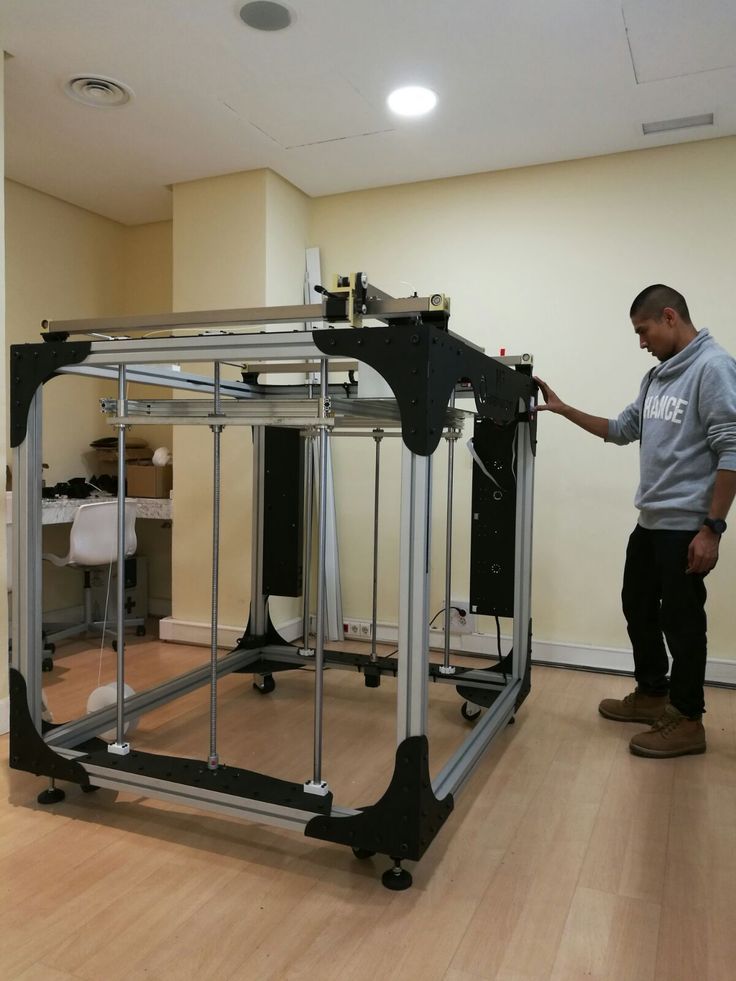 ”
”
The boat took 72 hours to be 3D printed
The machine is also expected to meet the needs of rapidly deployable and logistically weak infrastructure systems. With this in mind, the teams printed a 2.2-ton, 6.4-metre-long 3D mold to make a 23-metre-long bridge girder. The bridge is expected to be built in Hampden, Maine, in the summer of 2020. Habib Dagher, Executive Director of the UMaine Advanced Structures and Composites Center concludes: “We are truly honored to be working with leaders from the Maine boatbuilding industry, Maine Forest Products Industry, the national construction industry, Maine Technology Institute, Oak Ridge National Laboratory, the U.S. Dept of Energy Advanced Manufacturing Office, the U.S. Office of Naval Research, the U.S. Army, and the U.S. Army Corps of Engineers. With this large printer, we will be able to accelerate innovation and prototype development in both the civilian and military sectors.” Find more information HERE.
What do you think of these achievements coming from the University of Maine? Let us know in a comment below or on our Facebook and Twitter pages! Sign up for our free weekly Newsletter, all the latest news in 3D printing straight to your inbox!
The world's largest metal 3D printer launches rockets / News / Info | Elektrostroymarket
I will never forget the first time I saw a rocket materialize before my very eyes.
In October 2018, I stood in a small room and watched a massive robotic arm gracefully move around a large metal mold that rapidly grew in size as I looked at it. A hand accurately applied a jet of liquid aluminum to build the structure, layer by layer, while the other two hands waited with finishing tools at the ready. I stood at the headquarters of the new rocket company Relativity Space in Los Angeles and watched in awe as part of its first launch vehicle, the Terran 1 rocket, was born.
I just recently joined Relativity as the first engineer hired for its avionics department. Relativity was a game-changer from my previous job, even though other companies I worked for also made rockets. But they did it in vast, thousand-square-foot facilities, enough to house rows of bulky manufacturing tools such as metal rollers, dome spinning machines, and friction stir welders. However, in Relativity, most of the booster is built in the small room where I stood, which is only 9meters across.
The room contained Stargate, the largest metal 3D printer in the world. Relativity invented the Stargate printer for the audacious goal of 3D printing an entire rocket designed to fly to low Earth orbit. We hope that our rockets will eventually fly even further. Perhaps one day we will send our 3D printers to Mars so that rockets can be built on the Red Planet. From there, who knows where they will go.
Does that sound crazy? Maybe insanely ambitious. But many people are serious about our idea. Four commercial customers have signed up for low-Earth orbit launches in early 2021. The US Air Force has approved our request to build a launch site at Cape Canaveral, the iconic site in Florida that has launched many of the historic human spaceflights. And NASA has leased us a building at the Stennis Space Center in St. Louis Bay, Mississippi, where Relativity will build a plant capable of producing 24 rockets a year. Such mass production will revolutionize rocket technology. We believe that with the help of additive manufacturing, that is, 3D printing, we can achieve this.
Four commercial customers have signed up for low-Earth orbit launches in early 2021. The US Air Force has approved our request to build a launch site at Cape Canaveral, the iconic site in Florida that has launched many of the historic human spaceflights. And NASA has leased us a building at the Stennis Space Center in St. Louis Bay, Mississippi, where Relativity will build a plant capable of producing 24 rockets a year. Such mass production will revolutionize rocket technology. We believe that with the help of additive manufacturing, that is, 3D printing, we can achieve this.
Video: Relativity Space
Launching a rocket into orbit is a binary proposition: either you succeed or you fail. During the roughly 10-minute flight from the launch pad to space, a staggering array of systems must work together perfectly - plumbing, avionics, software, pyrotechnics and pneumatics, to name but a few. If any component fails, the whole operation can literally collapse.
The cost of a rocket is not determined by its raw materials; it's pretty cheap. This is largely due to the human labor required to process these materials into usable components and test them for airworthiness. There are two ways to reduce these labor costs: you can reduce the total number of parts in a rocket so that less labor is required, or you can change manufacturing processes to reduce the need for human minds and hands.
This is largely due to the human labor required to process these materials into usable components and test them for airworthiness. There are two ways to reduce these labor costs: you can reduce the total number of parts in a rocket so that less labor is required, or you can change manufacturing processes to reduce the need for human minds and hands.
Blue Origin, SpaceX and Virgin Orbit - leaders in the emerging commercial space sector - have tried a combination of the two to reduce labor costs. But these companies' use of traditional "subtractive" manufacturing techniques, in which chunks of raw materials are cut and shaped, limits their options. Companies have automated most of their supply chains, but they still have tens of thousands of parts to track through complex manufacturing systems. Automating the manufacturing process has reduced human labor but requires costly specialized tools to match the size of a particular rocket.
Side view [left] and bottom view [right] of the Aeon engine.
Photos: Relativity space
Simplify, simplify, simplify: The theory of relativity in space makes rocket science easy. Its Aeon engine, shown in side view [left] and bottom view [right], consists of three 3D printed parts. A classic rocket engine is assembled from thousands of parts.
Relativity solves the problem of labor by using additive manufacturing to print complex components using a single operation to turn raw materials into finished products. This approach greatly reduces the number of parts, since one of our components is often equivalent to dozens of small parts made in the traditional way. Our process also relies on our 3D printers rather than fixed tools, allowing us to be nimble and resourceful. We can make significant design changes at relatively little cost or loss of time.
The rocket industry operates on a different scale than other manufacturing sectors. Consider that the Volkswagen plant in Wolfsburg, Germany produces about 3,500 vehicles per day. In contrast, any aerospace company that could build 100 rockets a year would be a huge success. What is considered large-scale in rocket technology is relatively small in other industries. This means additive manufacturing could have a big impact on the industry. Since only tens or hundreds of individual parts may be required per year, it makes no sense to invest in highly optimized tools to produce that part in mass quantities - the tools may not pay for themselves before the part is out of use. .
In contrast, any aerospace company that could build 100 rockets a year would be a huge success. What is considered large-scale in rocket technology is relatively small in other industries. This means additive manufacturing could have a big impact on the industry. Since only tens or hundreds of individual parts may be required per year, it makes no sense to invest in highly optimized tools to produce that part in mass quantities - the tools may not pay for themselves before the part is out of use. .
Making a new part on a 3D printer requires almost no upfront costs. For example, one of our Stargate printers can produce a 2m fuel tank followed by a 3m tank with minimal downtime. Instead of retooling the entire manufacturing facility to make the next piece of equipment in line, we only need to make a few changes to the software configuration.
Our co-founders Jordan Noane and Tim Ellis met in college at the USC Rocket Propulsion Laboratory in Los Angeles. No one worked for SpaceX and Ellis worked for Blue Origin before they teamed up again to create Relativity in 2015.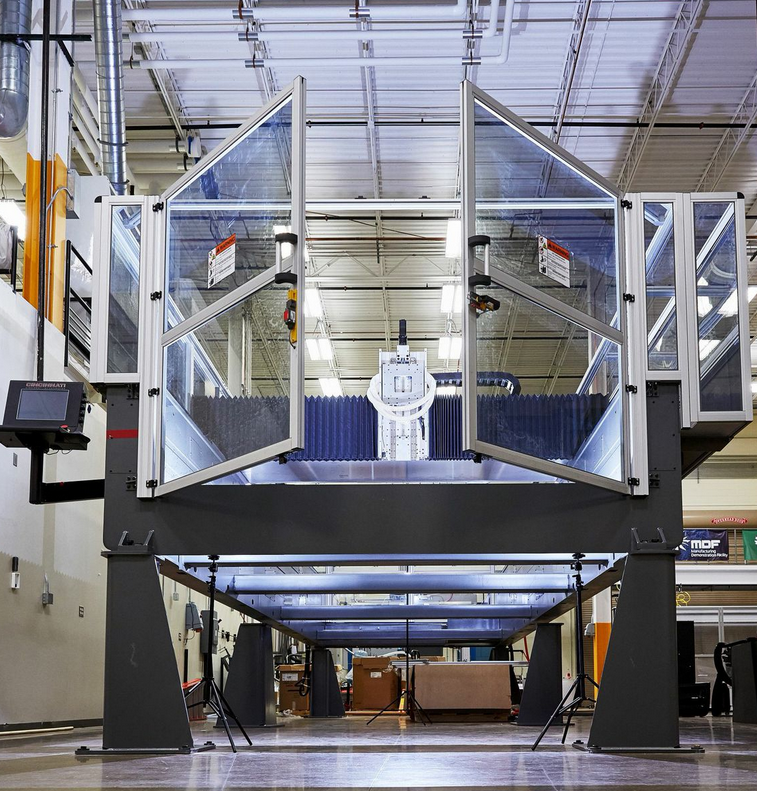
Both of their former companies use additive manufacturing to create some rocket components, but Noon and Ellis wanted to go further. They saw an opportunity to completely rethink how rockets are designed and built. They believed that by simplifying designs and manufacturing processes, they would also simplify the mental labor, the "cognitive overhead" associated with building a rocket.
Engineers are talking and looking at monitors.
Photo: ``Space of Relativity''
From start to finish: engineers monitor the printing process, which is fully automated.
Rockets usually consist of a huge number of separate parts: for example, the space shuttle system consists of 2.5 million moving parts. All parts must match exactly to each other and cannot unexpectedly form an assembly out of tolerance. Every part must be manufactured, tested, installed and tested again. If a part needs to be repaired, additional work will be required. And all these processes require engineers, technicians, tools and documents.
With additive manufacturing, you can design multi-part parts that would traditionally be separately manufactured and assembled. Less detail means fewer interfaces and less chance of things going wrong.
A prime example of this is our approach to designing and building our rocket engine. Inside a typical rocket engine, you'll find an injector that mixes the propellant with the oxidizer as they enter the combustion chamber, where the igniter starts the fire. During combustion, hot gas is formed, which moves through the nozzle, creating thrust. In principle, it sounds simple, but in fact everything is incredibly complicated. Note that Rocketdyne's F-1 engine, which was fired by a Saturn V rocket during NASA's Apollo program, contained a combustion chamber and nozzle assembly consisting of over 5,000 custom-made parts (and that's not including the injector).
The Relativity Engine, Aeon 1, is a different story. To create the engine, we use commercial 3D printers that use a process called direct metal laser sintering, in which a laser combines metal powder particles, creating layer by layer the desired structure. The simplest version of the engine, a pressurized version that uses pressurized gas to push the fuel and oxidizer from their tanks into the combustion chamber, is made by pressing the printer's power button three times (to print three parts). And we're moving on: we expect commercial printers to come out soon that will allow us to print the injector, igniter, combustion chamber, and nozzle as one unit.
The simplest version of the engine, a pressurized version that uses pressurized gas to push the fuel and oxidizer from their tanks into the combustion chamber, is made by pressing the printer's power button three times (to print three parts). And we're moving on: we expect commercial printers to come out soon that will allow us to print the injector, igniter, combustion chamber, and nozzle as one unit.
Jordan Noone, co-founder of Relativity Space, stands in front of the company's newest 3D printer, which is building a fuel tank for the Terran 1 rocket. The company's 3D printer is building the fuel tank for the Terran 1 rocket. The additive manufacturing approach makes it easy for the Noone team to refine their designs.
We use this pressurized motor for development and testing; an engine that will eventually fly will use turbopumps instead of simple compressed gas to move fuel (liquid methane) and oxidizer (liquid oxygen). Better suited to rockets with large fuel tanks, these turbopumps will increase the number of parts, but the manufacturing process will still be much easier than ever.
Many rocket engines use a technique called regenerative cooling, in which liquid propellant is pumped through cooling channels around the combustion chamber to remove heat. In the traditional manufacturing and assembly process, a thick piece of copper is shaped by rotating it rapidly and applying pressure to form the internal contours of the combustion chamber. It is then milled to create intricate cooling channels on the outside. A strong outer shell is then soldered to the copper structure, and the fuel intake manifold is welded onto the outer shell. The entire engine assembly requires finishing to ensure tight tolerances when parts are joined. Each of these processes can lead to design or manufacturing errors. The Aeon engine also uses regenerative cooling, but its combustion chamber is one of a kind. Moreover,
Men look at a rocket engine.
Photo: ``Relativity Space''
Stage two: Co-founders Tim Ellis (left) and Jordan Noone inspect the finished product: the second stage of the Terran 1 rocket, consisting of a fuel tank, engine and nozzle.
It is usually a daunting task to design, manufacture and put one engine on a test stand. This process takes 10 to 12 months using traditional methods. A major redesign takes almost the same amount of time. But we can iterate much faster. In our initial testing of the Aeon engine, we tested five versions over 14 months, running the engines more than 100 times.
As NASA astronaut Donald Pettit explained in his brilliant article "The Tyranny of the Rocket Equation" published on the NASA website, getting out of the Earth's gravity well is not an easy task. Missiles are basically empty ships waiting to be refueled. Pettit explains that 94 percent of the weight of a soda can is soda, and 6 percent is cans. The space shuttle's external fuel tank was 96 percent and 4 percent, which is an impressive improvement over soda can technology when you consider that the fuel tank contained cryogenic fluids that had to be pumped out at a rate of 1.5 metric tons of propellant per second. . .
The entire Terran 1 missile is designed for simplicity. The tanks that store the fuel and oxidizer are under "autogenous pressure", meaning that a small percentage of the vaporized fuel and oxidizer is pumped back into their respective tanks to replace the volume of liquid as it drains. Continuing with Pettit's analogy, imagine an unopened soda can that remains tough and strong despite the can's thin shell; However, once the jar has been opened, it can be easily crushed. Likewise, rockets use internal pressure to create a light but strong vehicle.
These autogenous systems on the Terran 1 tanks eliminate the need for the special pressure vessel that many missiles use inside their fuel and oxidizer tanks. These pressure vessels contain inert gases such as helium at extremely high pressure until they are ready to be released into a tank to provide internal pressure. These ships are known to be complex systems in development and production, and have been involved in several rocket failures over the past decade, including the explosion of a SpaceX Falcon 9 rocket.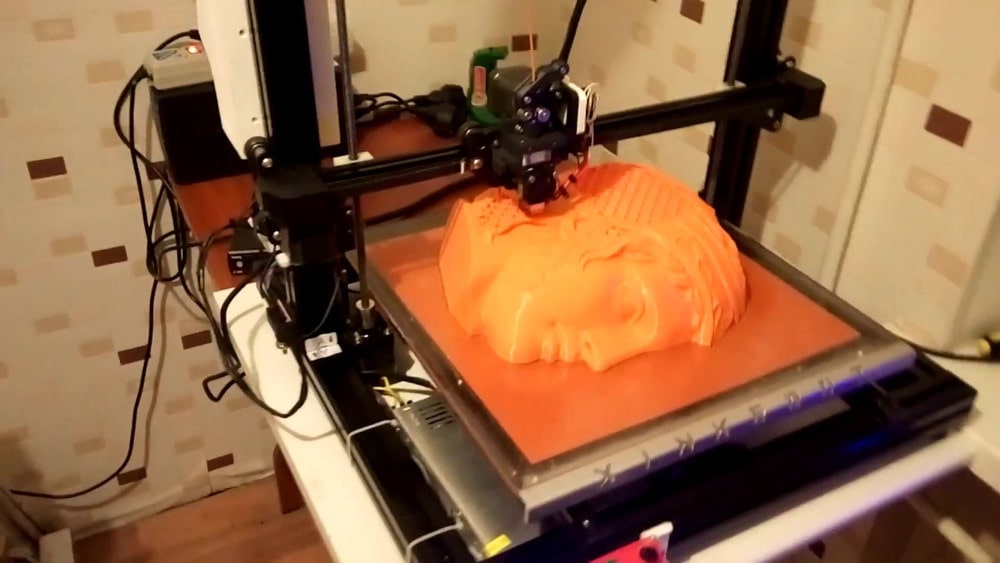 in 2015 .
in 2015 .
Commercial printers using metal laser sintering are suitable for our engines, but they are not suitable for tanks. These printers work by selectively melting desired portions of metal powder to create a solid material in each layer of the part. Since the layer of powder must be flat and even for each layer, the entire working space of the printer must be filled with powder, no matter how much material is actually cured. Most of this powder can be recycled, but some is lost in every print. Making a tank using a sintering laser printer would require an unrealistic amount of metal powder and would be a very slow process.
Photo of a Stargate 3D printer.
Photo: ``Space of Relativity''
Blazing The Trail: The Stargate printer is the world's first 3D printer that can produce massive metal objects such as a rocket's fuel tank.
That's why we designed and built Stargate, our huge 3D printer of a different kind. It uses an existing technique called directed energy overlay, but works on a scale never seen before. The printer feeds metal wire into the hardfacing zone and uses energy (usually a powerful laser) to melt the wire, creating printed parts layer by layer.
The printer feeds metal wire into the hardfacing zone and uses energy (usually a powerful laser) to melt the wire, creating printed parts layer by layer.
The Stargate places molten metal only where it is needed to build the structure, greatly reducing material consumption. It uses three massive robotic arms, one of which terminates in a printer head that ejects the wire; the other two contain working tools for finishing the printed component. We also wrote proprietary software to manage the "path planning" used to turn the design into detailed instructions for the robotic arm.
The Stargate has several restrictions. Its robotic arms move their work tools in free space during printing, meaning that the geometry that can be printed is limited by the kinematics of the robotic arms - they can only reach a certain distance and must avoid colliding with the printed structure. As the wire melts, the size of the bead produced by the welding process determines the minimum print resolution. But these limitations are not serious when it comes to large pressure vessels and structural elements.
But these limitations are not serious when it comes to large pressure vessels and structural elements.
Our Stargate printer is new technology and we believe it breaks new ground in aerospace manufacturing. But the novelty of this printing process also means that we cannot rely on pre-existing material data or process parameters to produce high quality products. Relativity has in-house metallurgists who hone the process to ensure our components meet stringent aerospace quality standards.
Video: Space of Relativity
In traditional aerospace manufacturing, a design change can take nearly a year of retooling and adjustment. Since it takes a long time to replace equipment, the avionics department is usually the most dynamic division of an aerospace company. Avionics teams (which manage the electronics that govern missile guidance, navigation, communications, etc.) are used to making last-minute software changes to fix problems in other parts of the vehicle.
The situation is completely reversed in Relativity, where an equipment design team can make significant design changes and still produce a new tank or engine in a matter of days. They can revise their plans so quickly that they challenge the avionics team's ability to manufacture printed circuit boards (PCBs) and design the cable harness that connects all the electronics and wiring. Avionics must adapt to the constantly changing and improving missile.
They can revise their plans so quickly that they challenge the avionics team's ability to manufacture printed circuit boards (PCBs) and design the cable harness that connects all the electronics and wiring. Avionics must adapt to the constantly changing and improving missile.
That's why we designed the Terran 1's avionics to be as modular as possible. We assume that sensors and actuators will be changed, so we have designed the electronics in such a way as to limit the impact of such changes. To achieve this, we have developed several proprietary methods for connecting busbars, minimizing the number of connectors and pins. We are working hard to reduce the number of harnesses, which are one of the least reliable parts of avionics on a rocket - every connection of every wire is a potential point of failure. Whenever possible, we use standards such as the Controller Area Network bus protocol (for communication between microcontrollers and devices) and Ethernet, which allows the use of existing industry tools for testing and development. This approach means we don't waste time looking for bugs in user protocols and can instead focus on making sure our avionics work properly in their specific use cases.
This approach means we don't waste time looking for bugs in user protocols and can instead focus on making sure our avionics work properly in their specific use cases.
In every small avionics design we look at, we aim for global rather than local optimization. For example, we use standard electronics design automation tools such as Altium Designer to create spaceflight-friendly basic circuits that we can use in different ways throughout the rocket. We call these circuits "bread and butter" and use them in voltage converters, processors, sensor interfaces, and other components. When our engineers solve a new problem, they build on the work they've already done, rather than starting from scratch. While this may seem like a common sense approach, you'd be surprised to see how many rockets contain complex circuitry simply because different engineers solved the same problem in slightly different ways.
The printer head lays down a metal wire and melts it into place, creating a tank. The lines of metal that make up the tank. Engine extension and 2nd stage injectors.
The lines of metal that make up the tank. Engine extension and 2nd stage injectors.
Photo: ``Space of Relativity''
Assembly: Printer head [top] lays down metal wire and melts it in place to build a reservoir, line by line [center]. The tank connects to the engine and nozzle attachment [below], forming the rocket's second stage.
Another example can be found in our firmware. For internal communications in our avionics units, we do not always use a PCB-optimized protocol, resulting in tiny performance and weight advantages. Instead, we sometimes use a protocol that we also use for external intercompany communications. This method greatly reduces the cost and time of firmware development. What's more, it gives us flexibility for our design decisions: we can make changes in the centralized unit, or we can add some sensor at the last minute to the tooling, but the software doesn't know the difference. This approach may not be optimal for avionics systems considered in isolation, but it gives us many advantages elsewhere in terms of missile design, manufacture, and flight.
Ellis, CEO of Relativity, often reminds us that we need to focus as much on designing and building our corporate culture as we do on designing and building our rocket. Relativity aims to maintain flexibility, so experimentation is encouraged. This attitude is contrary to the culture of traditional aerospace companies, which are trying to block their developments as soon as possible. We have an aggressive goal of launching Terran 1 by early 2021. Therefore, we use our modular approach to replace parts and constantly optimize our designs for the world's first 3D printed rocket.
Terran 1, which is about 30 meters high and 2 meters wide, is designed to launch small satellites into low Earth orbit at a price that is drastically lower than competitors can offer. This will allow smaller companies to order the entire rocket payload and send it to the desired orbit on their own schedule, instead of having to fly with a larger rocket whose orbit and destination is controlled by another company.
Relativity Space can stumble, but by focusing on design and manufacturing flexibility, we can afford to fail many times. We learn from every failure and move forward. We are watching the future of rocket technology materialize before our very eyes.
Top 10 biggest 3D printers in the world
Share on Facebook Share on Twitter Share on Vkontakte
Have you ever wondered how big 3D printers can be ? If this has happened to you, then it's time to satisfy your curiosity, we will talk about 10 largest 3D printers in the world. The criterion by which the selection was made was the size of the object that can be created in the chamber (or workspace) of the 3D printer .
At the end of the article you will find a slider with examples of the work of 3D printers included in this top ten.
So, let's start with the smallest large printer in our top ten.
10. Norsk Titanium
This 3D printer was created by the American company "Fabrisonic" . The technology by which it works is direct metal deposition. The size of the 3D printed parts is 120 x 120 x 180 cm. Although the maximum length of the product can be up to 215 cm according to the company.
The technology by which it works is direct metal deposition. The size of the 3D printed parts is 120 x 120 x 180 cm. Although the maximum length of the product can be up to 215 cm according to the company.
9. ExOne Exerial
This is Dual Chamber 3D Printer, each chamber measures 220 x 120 x 70 cm, can use metal, ceramic and sand as material, the latter is used to create sand cores and molds .
8. Voxeljet VX4000
The chamber measures 4 x 2 x 1 m and is currently the largest industrial machine, mainly used for making sand molds.
7. D-shape
The working surface of this 3D printer is a 6 x 6 meter aluminum frame. To create three-dimensional objects, a special sand material is applied layer by layer, the layers are fixed with a special binder.
The printer was patented in 2006 by Enrico Dini, founder of the British company "Monolite UK Ltd" . The first model of the printer used epoxy resin as a binder, but Dini later switched to using a magnesium-containing substance. After making this change, he again patented the 3D printer in 2008. In the future, Dini wants to use the 3D printer to create full scale buildings.
After making this change, he again patented the 3D printer in 2008. In the future, Dini wants to use the 3D printer to create full scale buildings.
6. Sciaky EBAM 300
The working chamber size of this 3D printer is 7.620 x 2.743 x 3.353 m. The electron beam melts the metal, which is fed in the form of a wire, and a three-dimensional object is created layer by layer according to the CAD model. Sciaky EBAM 300 works with metals such as titanium, titanium alloys, inconel 718 and 625, tantalum, niobium, stainless steel, 2319 and 4043 aluminum alloy, 4340 steel, zircalla and others.
5. KamerMaker
This printer was one of the very first large scale 3D printers, it uses fusing technology. With his help, the first 3D printed house was built on one of the canals of Amsterdam. The sizes of printed objects reach dimensions of 2 x 2 x 3.5 m, bioplastics and bioplastics are used as materials.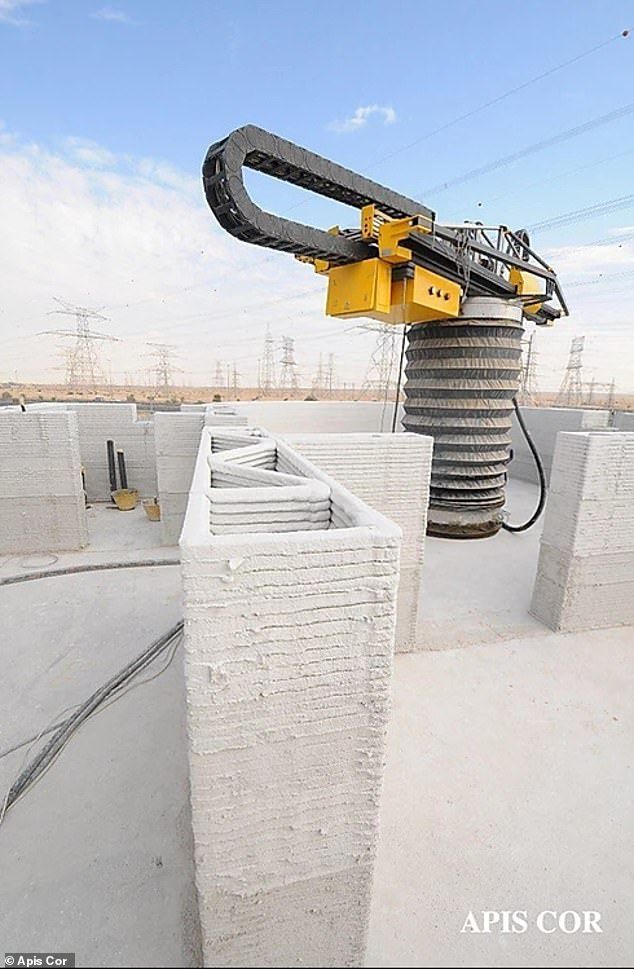 This is an open public project that anyone can join.
This is an open public project that anyone can join.
4. WASP GigaDelta
This 3D printer can grow objects up to 8-10 meters high. The creator of this machine, Massimo Moretti, dreamed of building houses using clay as a material and with minimal energy consumption. Now the company is developing a printer with a special extruder. After the work is completed, it will be possible to create objects up to 12 meters high.
3. Cincinnati Incorporated's BAAMCI
Workspace is 25 cubic meters.
This huge thermoplastic machine was created to print the "Strati" car for "Local Motors" , which was shown at an international technology event in Chicago in 2014. Now the creators of BAAM are working on the next, even larger version of the machine, its name will be "Bertha" .
2. BetAbram P1
Working space 288 cubic meters.
Slovenian company BetAbram manufactures (on request) 3D printers in three sizes for house printing.


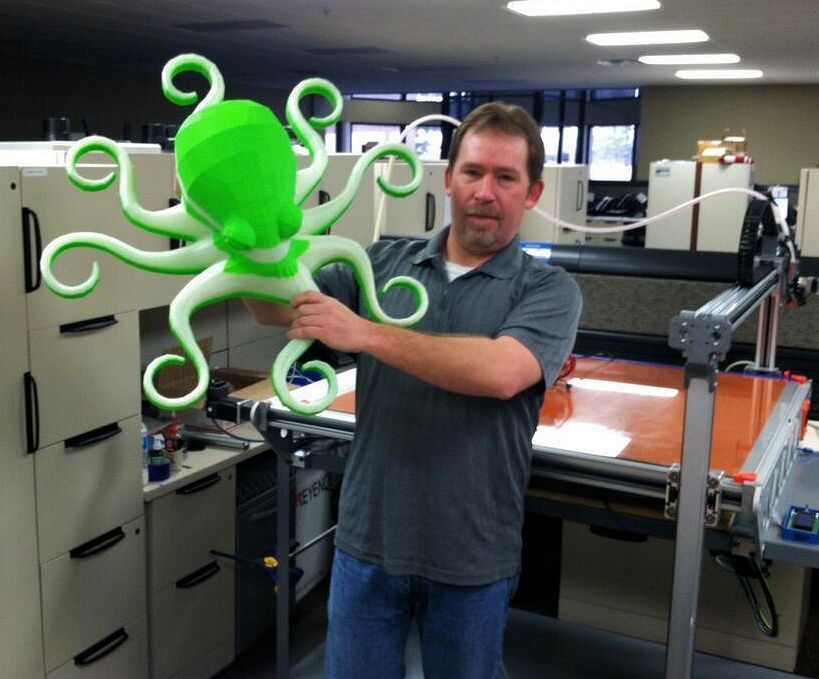 Prices may vary by region, over time and do not include additional products or services (taxes, shipping, accessories, training, installation, …).
Prices may vary by region, over time and do not include additional products or services (taxes, shipping, accessories, training, installation, …).
